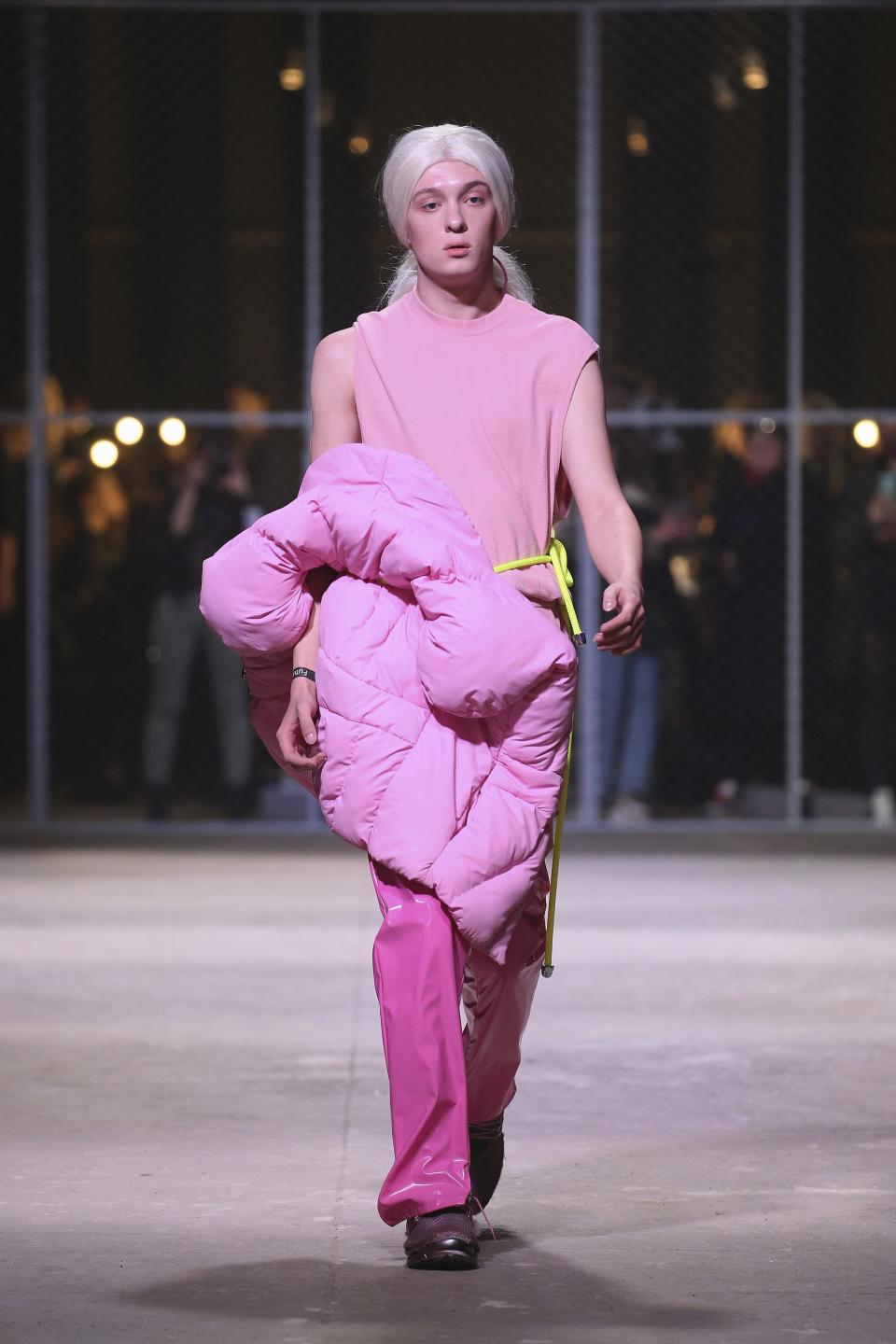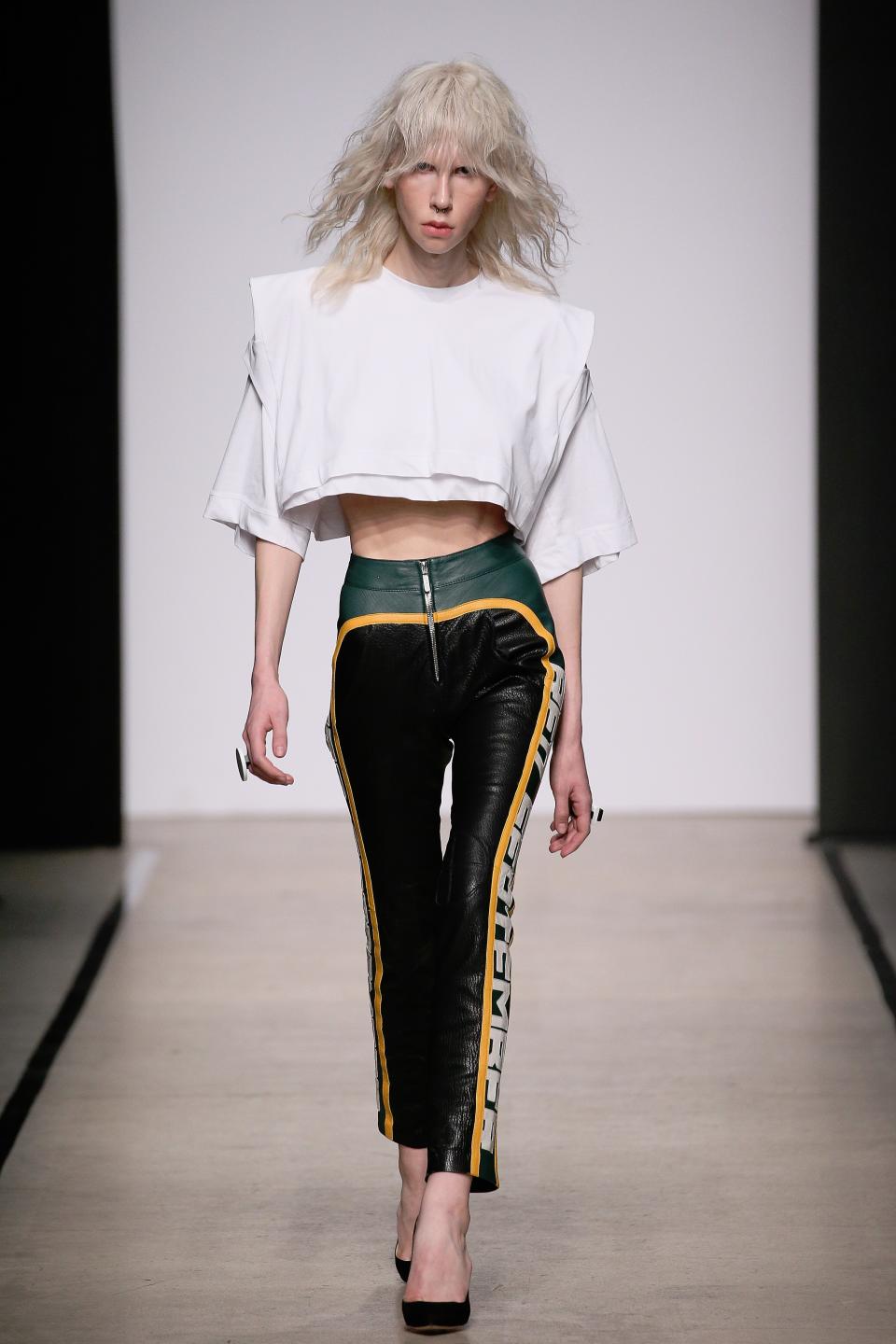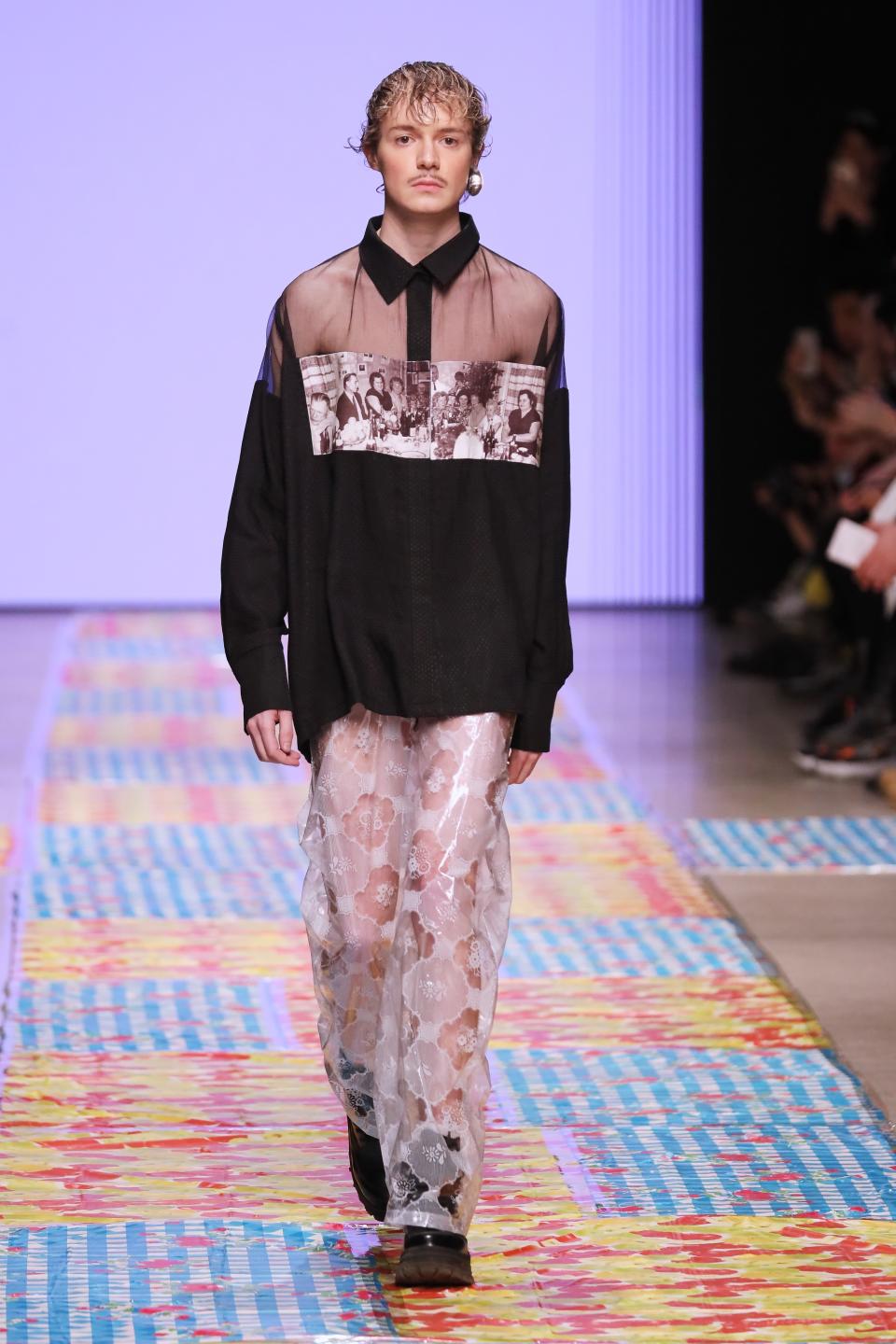Meet the Designers Showing Gender-Neutral Clothing at Russia Fashion Week
In more-progressive parts of the world, genderless fashion is nothing new, but for a place steeped in conservatism, like Russia, the idea is still rather niche. Yet in the last year, the fashion trend has been more prevalent thanks to a group of emerging Russian fashion designers who see clothing as a subtle yet trenchant way to talk about gender expression and identity, something that was clear during Mercedes-Benz Fashion Week in Russia earlier this month.
This year’s attendees were exposed to a fashion movement that has been changing the fabric of the larger industry for a few years now, delivering a message of gender diversity and inclusion — something that isn’t typically discussed or outwardly supported in Russia, a place known for its strict laws against the LGBTQ+ community.
In 2013, Russia put in place the "gay propaganda” law that banned the “promotion of nontraditional sexual relations to minors,” limiting young people’s access to pertinent information about the lives of LGBTQ+ people via the Internet and other media. Russian president Vladimir Putin said in a 2014 interview with the BBC that the law “does not harm anybody,” but in 2017 the European Court of Human Rights ruled that the law was illegal and a violation of freedom of expression.
Still, it’s the law of the land throughout Russia and has been used as a means to stop gay-rights marches and the activists who lead them. Last August, 16-year-old LGBTQ+ activist Maxim Neverov became the first minor to be charged under the law after Russian authorities found photos of what he says was “guys hugging” saved to a photo album his on Vkontakte account, a Russian social media platform. He was found guilty and fined, but eventually he appealed and won his case, getting the fine overturned. In late March, teen actors and festival organizers were interrogated by authorities for running afoul of the law.
By putting men in traditionally feminine silhouettes, and not allowing age-old, nonprogressive views on masculinity and femininity to hold them back, emerging Russian designers are making critical statements about what could be possible for Russia’s queer-identifying individuals. Could fashion help reshape a strict, conservative country that heavily relies on traditional gender norms?
Olya Volshebova is one of the fashion designers helping to push that message forward, launching her namesake label Volshebova in 2018. This year at Futurum Moscow, a fashion presentation for emerging designers in Russia, she showed her second collection, featuring exaggerated knitwear and puffer jackets in a range of pink hues. “Sometimes people get crazy that I dress boys in pink,” she tells Teen Vogue a few days after her show.

While the designer likes to present her menswear-centric designs on mostly male bodies, she believes women can wear her styles, too. “You don’t have to fit into gender roles; you can wear whatever you like,” she says. Olya believes clothing can help people in her country be more accepting toward LGBTQ+ people.
A few days later, Olga Vasyukova, designer of the newly launched Russian brand Red September, presented her debut runway show with architecturally inspired, shoulder-pad-focused outerwear pieces that were paired with pants of different varieties on all different kinds of bodies.
“It is very important for me to erase the boundary between the feminine and masculine."
Olga says that when she was growing up in the post-Soviet era, there wasn’t any talk about sexual orientation or gender identity. “Even the musicians who walked in leather leggings, feathers, and fur were not perceived as representatives of the LGBT [community], as people for the most part did not even admit that this might exist,” she explains. Due to her experiences, Olga tells Teen Vogue that she designs “for all people” and makes a conscious effort not to label or place anyone into categories.
In her show this year, she put Russian transgender model Nika Kraush on the runway (“I perceive her solely as a girl who perfectly presented a part of the new collection”). Another male model wore a skirt over his jeans (“It suited him incredibly, and he felt absolutely comfortable”).

Twenty-five-year-old designer Ekaterina Voronina, launched her namesake label, which is her first and last name in reverse, in 2016 with a menswear-focused collection, but her latest collection, “Molly’s Tale,” focuses on the blurring of traditionally accepted genders, including the fit of women’s clothing on the male body. “[The] waist, sternum, and hands are underlined by voluminous silhouettes, and ... men's suit woolen fabrics [are combined] with airy tulle, complemented by an unexpected combination of a women's corset over a classic men's jacket,” she explains.
It was when Ekaterina attended Polimoda, a private fashion school in Florence, that she was exposed to the idea that people should be free to wear whatever they want. Still, when asked if she thought that genderless clothing might encourage more people in Russia to see queerness more positively, Ekaterina stated, “I don’t think so. Maybe it could inspire, but not as much as LGBTQ community would like to see it happening.”
“We have oppression even inside [the LGBTQ+] ‘community’,” Nikita Kalmykov, the designer of Moscow’s genderless fashion brand Atelier Odor tells Teen Vogue. “For example I was harassed by a gay guy with whom I once had a date. He sent my nudes and private videos to anyone who could somehow ruin my career.”
The 27-year-old designer, who didn’t show this season due to limited resources, says he was harassed by a Russian gay man with whom he had gone on a single date. Nikita believes that due to this, businesses across Russia refused to order and carry his clothes in their stores. As an openly bisexual man in a highly conservative country, the designer makes a point to makes a point to create clothes for all people, and not distinguish his designs by gender. “It’s like a mirror of our inner freedom and personality,” he says. “So I’m doing fashion for a ‘person’, and try to reflect my own vision of fashion and art in clothes without any prejudices.”
Nikita, who prefers to wear skirts and long dresses, hasn’t found much of an LGBTQ+ community in Russia, from growing up getting made fun of for the way he dressed until now. “Everyone lives for themselves,” he says. He thinks that’s because of fear of retaliation, and as a result most are not willing to try to change people’s mindsets. And, due to the strictness of the current government, he doesn’t think things will drastically change for queer people anytime soon, because the mainstream culture is still incredibly homophobic.
These strict views could be due to what Russian fashion stylist Vasilisa Gusarova described as the super masculine representation of power by Russian political leaders. According to Vasilisa, “Aggressive anti-LGBTQ moods are still very common … [and] it is still risky to be queer here.” She says there are no outward gay-friendly or even unisex stores in Moscow and in the rest of the country.
"I’m doing fashion for a ‘person’, and try to reflect my own vision of fashion and art in clothes without any prejudices.”
On the last night of Russia Fashion Week, a massive crowd flocked to the runway show of 22-year-old rising star Roma Uvarov, who makes his clothing for everyone across the gender spectrum because he believes there should be no separation. Sending models of all varieties down the runway wearing turtleneck cable knit sweaters with ruffled collars and sleeves, see-through blouses printed with black-and-white images of Russian families, and even a puffer coat filled with dry pasta, Roma drew inspiration from retro Soviet kitchens, where people gathered and ate traditional foods together.
He launched his namesake label at age 19, after he says people told him they admired his personal style asked him to make clothes. While in his own life, Roma wants to wear skirts and dresses, he doesn’t feel as though he would be understood in public, so he does photo shoots in the clothes and shares them online instead. “I can’t go outside like this because I don’t know how people would react,” he says.

In fact, Russian fashion stylist Igor Andreev expressed over Instagram DM, “Anyone who experiments with their style and are not afraid of condemnation usually go by taxi,” recalling a particular incident in which he saw a transgender person being publicly harassed and laughed at on the street by a group of men.
Still, Roma sees himself as an ambassador of change and believes that through his clothes, he might show people how things could be if they weren’t so focused on restricting one’s gender. “It is very important for me to erase the boundary between the feminine and masculine,” he says.
In his mind, genderless clothing is a serious step toward bigger change. “I believe clothes not only make people feel more confident, but they could also help spark important conversations.”
It is worth noting that a recent wave of Russian streetwear brands, such as Volchok and Outlaw Moscow, have made androgynous silhouettes more popular for both women and men in Russia in the last few years—styles Stephan Rabimov, a fashion critic and American journalist, says have become popular because they are easier to produce and have maximum “sales potential”. But emerging designers like Roma and Ekaterina are pushing the dialogue several steps further. Only time will tell how these messages will change things in clothing, retail stores, marketing, and further beyond the barriers of Russia’s fashion universe, and if in fact clothing can be a catalyst for changing people’s mind-sets.

